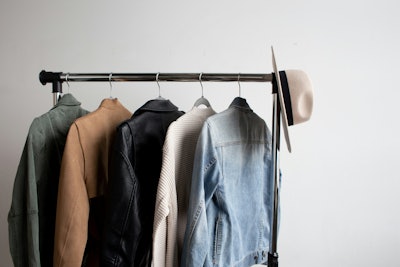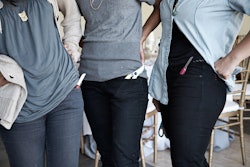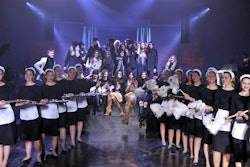
Choosing a dress code might seem like a small logistical detail, but it can have a big impact on your event. Done well, it sets expectations, enhances the guest experience, and even inspires some Instagram-worthy fashion moments.
“Something I always emphasize to my clients,” says Jasmine Charbonier, the business strategist behind Charbonier Consulting in Tampa, Fla., “is that dress codes exist to make guests feel comfortable—not restricted. When everyone's dressed appropriately, they can focus on having fun instead of feeling over/underdressed. That's the ultimate goal.”
So how do you land on the perfect dress code—and make sure your guests actually follow it? We asked some event profs to break it down.
1. Think about your audience.
Start by considering who’s attending. Jenny Howard-Maxwell, chief experience officer of Occasionally Fabulous Events in Denver, recommends thinking through factors like age range, cultural background, industry, and personal style preferences. “A tech startup crowd, for instance, may lean more casual, while a corporate finance audience might expect more traditional attire,” she points out.
A younger, trend-savvy audience might welcome a relaxed or themed dress code, while a more formal or senior crowd might appreciate traditional language and clear expectations. Either way, aligning the dress code with guest comfort helps avoid confusion and sets the tone for a smooth experience from the start.
2. Factor in timing and location.
“From my experience planning corporate galas and weddings, the biggest factors are timing, venue, and overall vibe,” says Charbonier. “I've found daytime events almost always lean more casual—you wouldn't want guests sweating in tuxes at a 2 p.m. garden party.”
Howard-Maxwell also considers the season, weather, and venue style. “An outdoor garden party, a downtown hotel ballroom, and a rustic barn will each lend themselves to different dress codes—from flowy sundresses to cocktail attire or even boots and denim,” she says.
3. Match the event’s tone and purpose.
Dress codes are another opportunity to reinforce your brand identity or event message. Think of dress as an extension of your storytelling. “The dress code should reflect the tone, purpose, and audience of the event,” says Amore Philip, an event producer and the CEO of Apples & Oranges Public Relations in New York. She often considers a brand or event host’s personality when choosing a dress code. “For instance, a dinner for climate investors might call for a cocktail-chic style with a sustainable twist—like using eco-friendly luxury fabrics,” she explains. “In contrast, a product launch for a beauty brand may require trend-forward, fashion week-inspired attire.”
Howard-Maxwell adds: “Is it a celebratory gala, a networking mixer, or an educational seminar? A black-tie dress code can add elegance and formality to an awards night, while business casual may be more suitable for a professional development conference.”
4. Be practical!
“If the event spans multiple sessions or locations, or if attendees won’t have time to change throughout the day, the dress code should be practical and versatile,” says Howard-Maxwell. “For example, recommending layered looks or suggesting day-to-night transitional outfits can help guests stay comfortable and confident throughout the event.”
Think through what guests will be doing—standing, walking, dancing, dining—and suggest styles that work for the full experience. For outdoor or active settings, small cues like “block heels recommended” or “bring a wrap for cool evenings” can make a big difference in guest satisfaction.
Decoding Dress Codes
What exactly do each of the traditional—and more modern—dress code terms mean? Let's break it down.
- Black tie: Howard-Maxwell says the term “black tie” has evolved. “It used to mean tails, cuff links, and gowns only. Now, it can be a black suit with an open jacket and no tie at all,” she says, noting that the term “black tie” is more to convey the prestige and formality of the event. “It is code word for: ‘This is a high-end event so please use your manners and RSVP, and don’t you dare show up in jeans and a T-shirt.’”
Lynne Goldberg, the owner and event specialist behind Boca Entertainment in Boca Raton, Fla., agrees that guests are interpreting black tie with more flexibility. “Many of my clients want to spice up the traditional and go for a more edgy, fun vibe while still having a formal affair—so what used to be black tie has now become ‘black tie with a twist,’” she says, noting that can be something like adding a pop of color. (This year’s Grammy Awards, for example, had an “artistic black tie” dress code.) - Cocktail vs. Semiformal: Though often used interchangeably, these dress codes have slightly different connotations. “Cocktail attire is perceived as younger and hipper, while semiformal can be perceived as more conservative,” explains Goldberg. “Cocktail attire suggests suits or sport jackets for men with button-down shirts and maybe some sort of a tie, while semiformal suggests only suits and ties for sure. For women, cocktail attire can be fun and flirty while semiformal suggests more sophisticated classics.”
Howard-Maxwell puts it simply: “When I think of the difference between cocktail and semiformal, glitter comes to mind!” she says. “Cocktail dresses are more fun and can be shorter and tighter. Semiformal alludes to the fact that the hemline should be longer—and maybe less spandex involved.” - The “Elevated” Trend: “The word ‘elevated’ seems to have attracted a buzz,” observes Goldberg. “'Elevated dinner attire,’ ‘elevated cocktail attire,’ ‘elevated beachwear’ are all examples. I think by adding the word elevated, guests think more about what they are wearing than they might otherwise have, and party hosts look forward to seeing their guests’ choices.”
Charbonier agrees. “I'm digging the move toward ‘elevated casual’ dress codes that feel special without being stuffy,” she says. "Like ‘garden party chic’ or ‘coastal elegant.’ It gives guests room to have fun while still looking polished.” This type of language is especially helpful when you want effort—not formality. It encourages creativity without rigid rules. - Playful, Themed Dress Codes: Of course, you don’t have to stick to traditional codes at all. “I am loving the shift toward personalization and playfulness!” says Howard-Maxwell. “I am seeing more clients lean into themed dress codes like 'Desert Disco,' 'Garden Glam,' or 'Monochrome Chic' that give guests a creative prompt while still offering flexibility. It sets the tone, gets people excited, and honestly makes for killer photos.”
Her advice? Avoid being too vague—or too rigid. “Telling people to dress 'smart casual' without any context is confusing (are we talking blazers or jeans?). On the flip side, ultra-strict rules can stress guests out and kill the vibe.” Remember: If you're using a theme, visual inspiration can go a long way—whether it's a Pinterest board, mood board, or just a few sample looks in your RSVP email.
How to Communicate an Event's Dress Code
To communicate the dress code, “put it clearly on the invite, then reinforce it everywhere—your website, email reminders, etc.,” suggests Charbonier. “I learned this lesson the hard way after an awkward beach wedding where half the guests showed up in formalwear. Now, I include example photos or specific descriptions like ‘resort casual: sundresses, linen suits, no jeans.’ It makes a huge difference.”Philip agrees. “Clarity is essential. I include the dress code on the invitation, the event website, and in confirmation emails—often with a mood board or visual cues to avoid confusion,” she says. “Phrases like ‘Met Gala meets minimalism’ or ‘Chanel runway meets rooftop summer’ help convey the vibe effectively. It's important to be straightforward in your descriptions.”
Depending on the event, Howard-Maxwell sometimes goes even further and sends out a full style guide a few weeks in advance. This typically includes tips for what to wear and not wear, the weather forecast, whether the event is indoors or outdoors, etc. “I am a true fashionista, so this is where I can honestly say I go a little overboard and have fun with it,” she says. “Pulling designs that match the decor of the event that will inspire guests is always the goal here.”
What Should Event Staff Wear?
“For staff attire, I'm a big believer in making them blend seamlessly with the event vibe while still being practical,” says Charbonier. “My go-to is all black with small touches that match the event colors, like ties or scarves. The staff needs to move and work comfortably—I'd never put servers in long gowns or restrictive suits. Clean, pressed, professional pieces win every time.”
Philip leans into similar strategies: all-black outfits for a classic, polished look, or branded apparel and color-coded outfits for immersive experiences. “Regardless, their appearance should be polished and approachable, avoiding anything that distracts from the event.”
“I believe that the way you dress makes you feel a certain way,” agrees Howard-Maxwell. “Staff will look and work more professionally if dressed appropriately.” And for themed events, giving staff the option to dress on-theme—without sacrificing function—can help them engage more meaningfully with the guest experience.



















